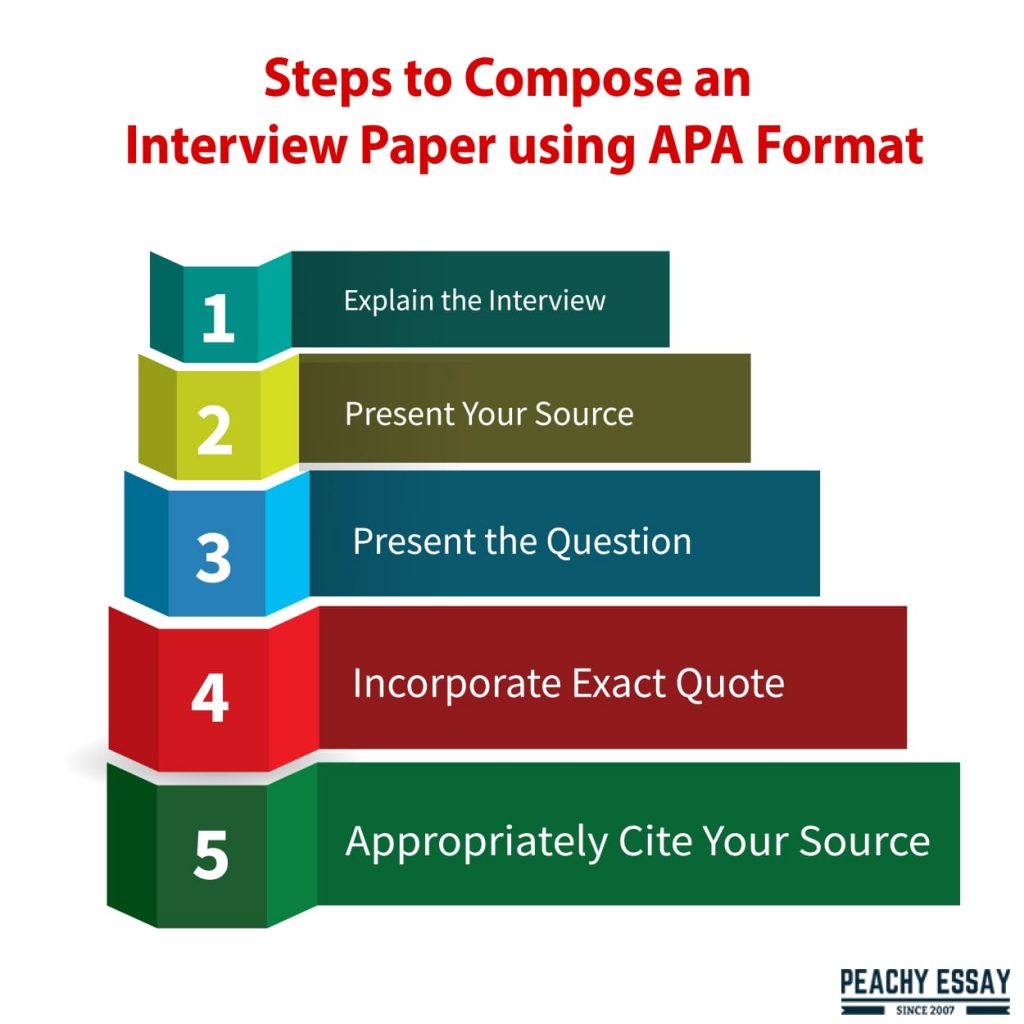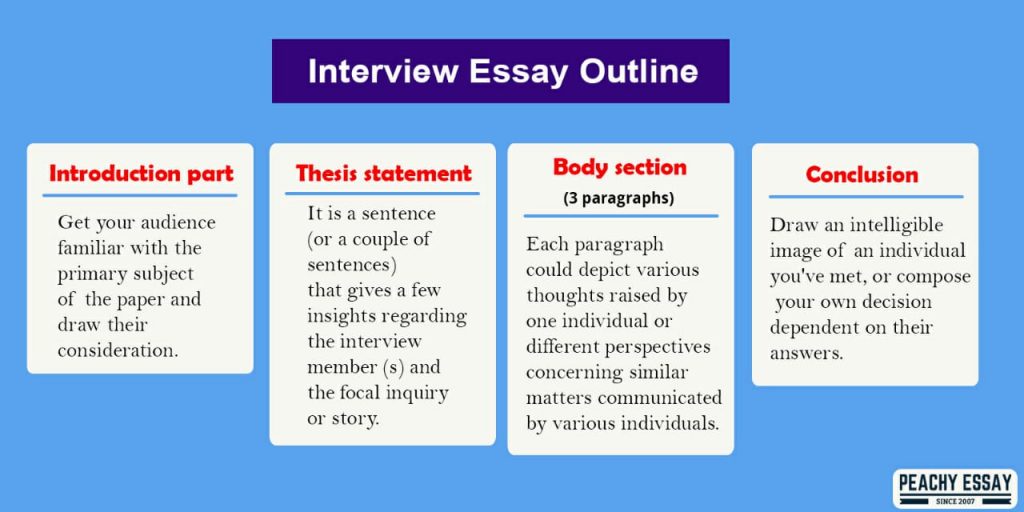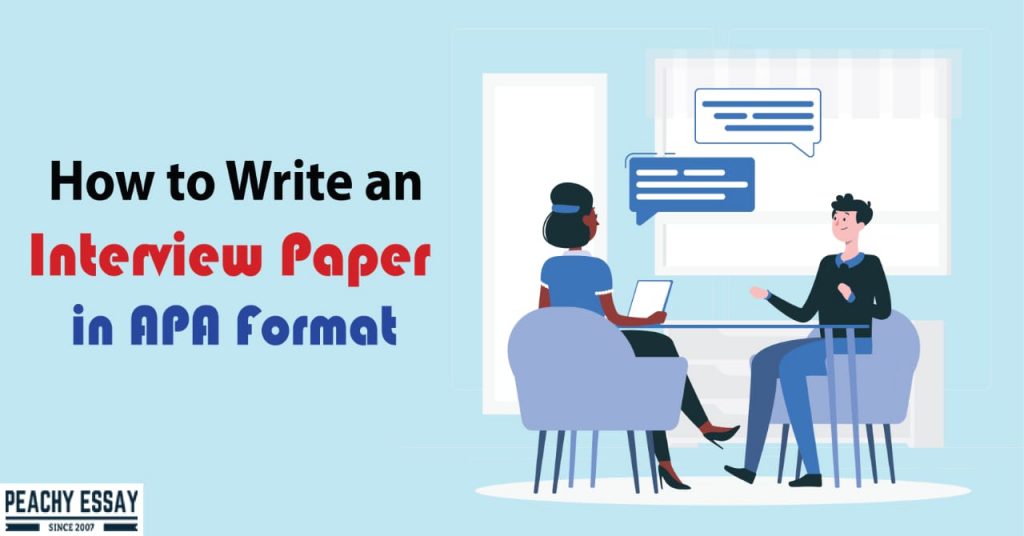We frequently see interviews in daily papers or magazines. During the interview, there are at least two participants – an individual who poses inquiries and the interviewee. The meeting is done to discover an individual’s assessment on a specific issue, occasion, and so on. It is likewise a decent basis for one of the scholarly tasks – an interview paper. Before you think of composing an interview exposition, it is vital to familiarize yourself with how it is done.
What is an Interview Paper?
The interview exposition’s aim is to give a particular perspective on an article, occasion, or phenomenon based on the appropriate responses of various individuals. Thus, you need to hold an interview if you need to find these solutions. After breaking down the different answers you have gotten, you ought to put together and measure them suitably and consider incorporating them into your work.
How to Write an Interview Paper in APA Format
When composing an article, it is important to talk with others to get more data. How to incorporate the content of the interview shifts relying upon the style you follow for your composition. When utilizing the American Psychological Association (APA) style, your interview should either be referred to as personal communication or recorded in detail in your content. The APA interview composing format has explicit standards on how to compose an interview paper.
Here are the steps from Peachy Essay writers on how to compose an interview paper using APA format.

Explain the Interview
The APA design for interviews anticipates that you should clarify the reasonable motivation behind your interview. You should not utilize an interview for data that can be gotten somewhere else, like publications or online sources. Before your meeting, you ought to be acquainted with the background literature and have clear, brief inquiries prepared.
Example:
The publication does exclude an itemized or honest conversation of patient reporting bias in emergency medication.
Present Your Source
Present the subject of your meeting in text, depicting their capabilities, background, and why they are appropriate to respond to your inquiries.
Example:
I reached Jane Jones, M.D., Ph.D. for a proficient conversation of patient detailing predisposition. Dr. Jones is a specialist in the field, having practiced for a very long time and published prominent research that shows patient reporting bias.
Present the Question
Present the inquiry you posed to the interviewee while clarifying their reaction to the content of your paper. This is imperative to give the setting in which the interviewee presented facts. Be evident whether the inquiry was open-ended or close-ended
Example:
To survey the techniques used to address bias, I asked Dr. Jones through telephone, “What are the means you utilized in your examination to represent reporting bias?” I likewise requested that she talk about different predispositions that should be represented in observational investigations.
Incorporate Exact Quote
Use cites, as opposed to summarizing while referring to explicit data and realities given by the interviewee. A statement longer than 40 words should be put to the side as a block statement, as per APA style.
Example:
Dr. Jones replied, “My essential strategy for amending reporting bias is a carefully built poll in lieu of a freestyle patient meeting.”
Appropriately Cite Your Source
When referring to sources utilizing the APA format, you should consistently include an in-text reference in brackets. The reference should be incorporated straightforwardly after a statement or reworded text and incorporate the individual’s first initials, last name, “personal communication”, and date the interview occurred.
Example:
“My essential strategy for adjusting detailing inclination is a painstakingly built survey in lieu of a freestyle patient meeting.” (J. Jones, individual correspondence, April 9, 2018).
If you notice the interviewee in the content presenting the statement or summarized text, their name shouldn’t be remembered for the in-text reference.
Example:
Dr. Jones battles that a poll considers more genuineness and exactness in reporting (Personal correspondence, April 9, 2018).
APA talk with design doesn’t need a reference to the meeting in your reference list since it’s a source that can’t be found by someone else.
How to Write a Personal Interview in APA Format
List the meeting by the name of the interviewee. You may either depict all that you have gained from the interviewee utilizing a story style or leave the article being referred to as question-answer format.
As per APA style, an interview you conduct should be included on the Works Cited page. List the meeting by the name of the interviewee. Incorporate the descriptor “Personal interview” and the date of the meeting, as in the accompanying model:
Billiken, Billy. Personal interview. 1 Jan. 2020.
In the body of your paper, the interviewee’s last name ought to show up in an incidental reference where required. For instance: (Billiken).
If you meet an individual, refer to your entrance a similar way you would do to individual correspondence. You can do this in one of three different ways: email, phone, and face to face.
- Model – Email Interview Citation
Last Name of Person Who Was Interviewed, First Name. “Title of Email.” Received by the name of Person Who Received Email, Day Month Year of Email. Email Interview.
Anaya, Rudolfo. “Re: Banning of Bless Me Ultima.” Received by Jessica Carranza, 4 June 2019. Email Interview.
- Model – In-Person Interview Citation
Last Name of Person Interviewed, First Name. Meeting. By Interviewer First Name Last Name. Day Month Year of Interview.
Anaya, Rudolfo. Meeting. By Jessica Carranza. 4 June 2019.
- Model – Telephone Interview Citation
Last Name of Person Interviewed, First Name. Meeting. Day Month Year of Interview. By Interviewer First Name Last Name. Phone Interview.
Anaya, Rudolfo. Meeting. 4 June 2019. By Jessica Carranza. Phone meet.
What is an Interview Paper Writing Process?
Here is the interview paper writing process.
- Decide the motivation behind your composition. Pick a subject.
- Make a rundown of inquiries for interviewees.
- Pick individuals you need to make the participants of your meeting.
- Conduct a meeting and record every one of the appropriate responses.
- Process the outcomes you have and execute them in an ideal manner conceivable.
- Compose an interview paper based on the essay format.
Interview Essay Outline: Mapping and Formatting
Other than the fundamental pieces of your exposition, including the presentation, body, and ends, we suggest you begin setting up your paper with an interview article layout, which will show the intelligent design of your work and help you with keeping up the primary thought all through the entire paper.
Here is the interview essay outline

When you have settled on the thing you will write in every specific piece of your paper, or even before that; there is one more significant interesting point – you are to pick your meeting exposition design. There are, in any event, three principal types: narrative, conversational, and Q and A.
- Narrative: You are allowed to utilize the individual’s immediate discourse and retell their words through statements and add your own considerations. This article gives you more opportunities for investigation, and you can overlook repetitive or pointless data.
- Conversational: Its style is less strict than the others. Here you have a few choices of how to address the audience (first-or second-individual portrayal).
- Questions and answers: When composing an interview paper in Q and A design, you utilize just precise statements with no changes. Regularly such an arrangement can be found in magazines, and it is smarter to carry it out on the off chance that you have just a single interviewee.
How to Start an Interview Essay
State your Question
The presentation of a decent meeting exposition should determine what the essential inquiry you need to answer is. You should express the primary issue of your article clearly; however, attempt to make it intriguing to the audience. Pick a theme, conversation which will be energizing for your interviewee – this will give charming and uncommon answers that will make your meeting exposition better. How to compose a meeting paper presentation properly? Remember to incorporate your postulation proclamation!
The main role of an interview exposition could be to introduce a specific individual to your audience. For this situation, your postulation articulation will incorporate some foundation realities about the interviewee. If you are to dissect the thoughts of various individuals to make a foundation for your own decision, you need to express your principle address and set up your reader for what is the issue here. A refined thesis statement is, in every case, clear and justifiable. You should ensure it’s kept up suitably all through your paper. Since you realize how to compose a proposal articulation for a meeting exposition and think of an appealing presentation, it’s an ideal opportunity to move unhesitatingly to the body part of your composition.
The body of the interview paper
Your exposition may appear to be unique, relying upon the picked format. Be that as it may, there are a few general necessities you would be wise to follow. Along these lines, the body part ought to contain data got through interviews. It implies that the inquiries you will pose should be considered ahead of time, giving you more successful meeting and educational answers. If you are recording the meeting, ensure you utilize every one of the appropriate responses as they are, with no changes. If you write in a Q and A format, check the accentuation cautiously and follow the format prerequisites. If you picked a narrative format, your undertaking is to apply insightful and basic intuition effectively to utilize the got answers for supporting your own thoughts or to more readily uncover the character of the member (or members) of your meeting.
To make the body some portion of your paper really energizing, dissect the meeting insightfully. You can likewise utilize significant factual information to make your exposition very much grounded. Besides, if you have more than one member, you can contrast their answers with getting perspectives of the two specialists and everyman or to affirm or discredit your proposal proclamation. In some cases, an article that you are allocated to compose could base on the aftereffects of an assessment of public sentiment, which you are to lead. For this situation, you ought to show the number and the age gathering of the members. As should be obvious, numerous elements can influence the substance and organization of your article’s body part. Nonetheless, the fundamental principle is to be mindful and attempt to think ahead – it is the correct path to the last piece of the meeting paper – the ends.
How to End an Interview Essay Perfectly
Truth be told, you have a lot of approaches to complete your interview paper. A proper interview paper end can feature the accompanying perspectives:
Your response to the interviewees’ answers;
The impact of reactions on your own contemplations;
The solution to your initial inquiry is dependent on the meeting results;
Changes overall measurements impacted by the reactions got;
Additionally, an end can demonstrate or disprove the thought you made toward the start of your paper. The matter is it ought to be grounded and reasonable. Try not to disregard the rehashing and editing of your interview paper to keep away from some normal errors.
What is the Purpose of an Interview Essay?
Interview expositions permit you to utilize individuals as your sources as opposed to books. What is particularly useful in such a paper is that you can get a first-individual perspective regarding whether this is about an individual’s life or something wherein they are a specialist.
Such papers can be particularly significant if you write about relatives or interview individuals who do a task or action you might want to attempt yourself.
Where Can I Find Interview Essays?
These papers are recognizable to any individual who peruses a paper or magazine. While individuals frequently talk with entertainers, artists, or government officials, astounding articles can be composed by conversing with ordinary individuals. Papers that record the existence history of conventional individuals are called oral history.
How Do I Do the Interview?
Pick a Good Question: You will pose a specific inquiry about a subject of your decision to a few unique individuals. By and large, you will need to pick a doubtful subject — this implies a theme wherein there are shifting feelings.
- Pose the Inquiry and Give the Person Time to Answer and Explain: What makes this not quite the same as a study is that you will offer the individual a chance to clarify their response. Frequently the meeting works better if the inquiry poses something a great many people have an assessment on.
- Pose Follow-Up Inquiries: In attempting to get more data regarding why individuals figure out how they do on the point, you will ask follow-up inquiries. You ought not to ask the equivalent subsequent inquiries to each individual. Instead, you will let your discussion with the individual guide you as you develop more inquiries appropriate to the specific discussion.
Interview Essay Outline
- Presentation/Conclusion: Decide how you will start and finish up your exposition. Your presentation ought to incorporate the inquiry you posed. Your opening may be recommended by a portion of the remarks from your meetings, or you should depict a circumstance that causes your inquiry. For instance, in a paper about whether you would offer cash to a vagrant, you could open with a situation or tale about being drawn nearer by a lady in a parking area and concluding whether to give cash. You may likewise utilize portrayal, measurements, as well as inquiries in your opening (depict vagrants in a major city, give insights, and end with the inquiry you posed in your meeting). You could likewise start with a word reference definition, a proper reference to a film, T.V. show, or tune, or a statement.
- Body: Highlight the reasons according to order. The body of your article ought to follow the order for reasons that you set up from your notes. Make certain to cite, reword, and sum up your sources. Likewise, make certain to dissect the associations among reasons and why individuals may reach those resolutions.
- Conclusion: Your reaction. You will finish up the paper with a passage or two explainings of which perspective, as you would like to think, has the most legitimacy and why. On the off chance that none of the perspectives from your meetings agreed with your assessment, you should discuss that.


